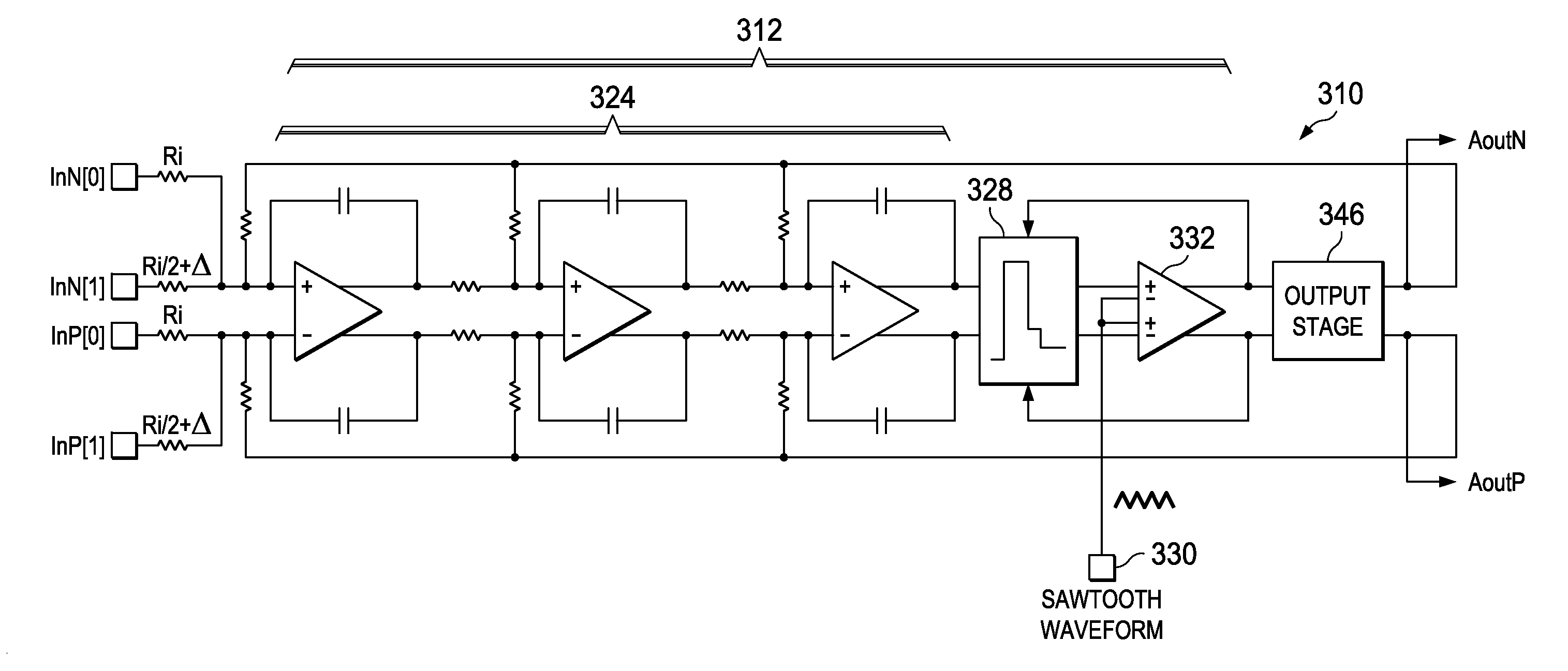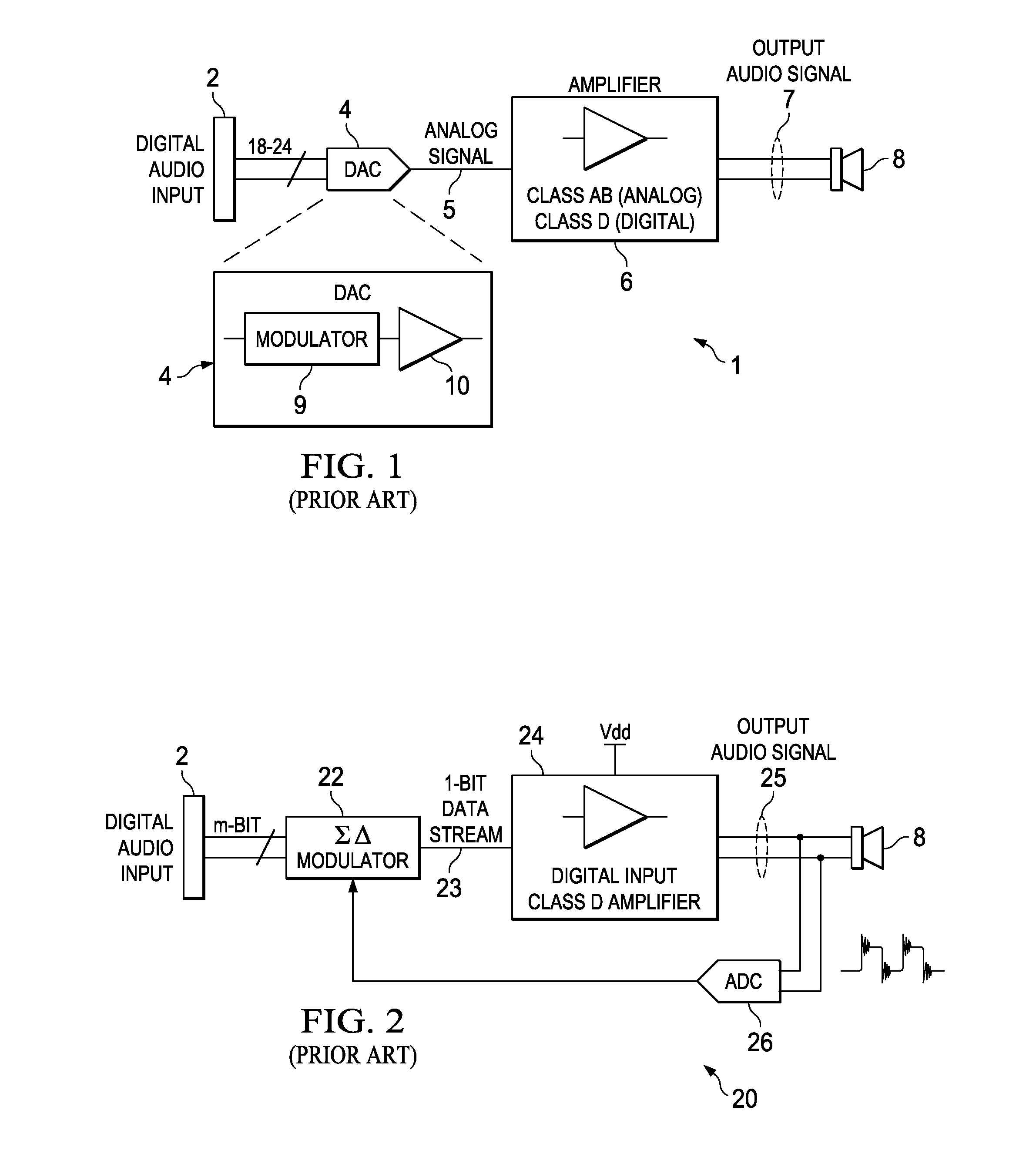Digital Input Class-D Audio Amplifier
a digital input and audio amplifier technology, applied in amplifiers, amplifiers with semiconductor devices/discharge tubes, transducer details, etc., can solve the problems of introducing noise to the audio signal, limiting the amount of noise that can be tolerated at the speaker, and affecting the sound quality of the speaker,
- Summary
- Abstract
- Description
- Claims
- Application Information
AI Technical Summary
Benefits of technology
Problems solved by technology
Method used
Image
Examples
Embodiment Construction
[0026]In accordance with the principles of the present invention, a digital input class D amplifier configured as an audio amplifier receives a digital input audio signal and processes the digital input audio signal using a DAC modulator coupled to a class D modulator. The digital input class D amplifier generates an output audio signal for driving a speaker. A salient feature of the digital input class D amplifier is that the digital input audio signal is not converted to the analog domain entirely but rather the DAC modulator converts the digital input audio signal to a signal in a semi-digital / semi-analog state, referred to as a “quasi-digital signal.” The quasi-digital signal is then used to feed into the class D modulator where the quasi-digital signal is amplified and filtered. The class D modulator forms an analog control loop with analog feedback. In this manner, no digital feedback loop is required and the digital input class D amplifier of the present invention can be impl...
PUM
 Login to View More
Login to View More Abstract
Description
Claims
Application Information
 Login to View More
Login to View More - R&D
- Intellectual Property
- Life Sciences
- Materials
- Tech Scout
- Unparalleled Data Quality
- Higher Quality Content
- 60% Fewer Hallucinations
Browse by: Latest US Patents, China's latest patents, Technical Efficacy Thesaurus, Application Domain, Technology Topic, Popular Technical Reports.
© 2025 PatSnap. All rights reserved.Legal|Privacy policy|Modern Slavery Act Transparency Statement|Sitemap|About US| Contact US: help@patsnap.com



